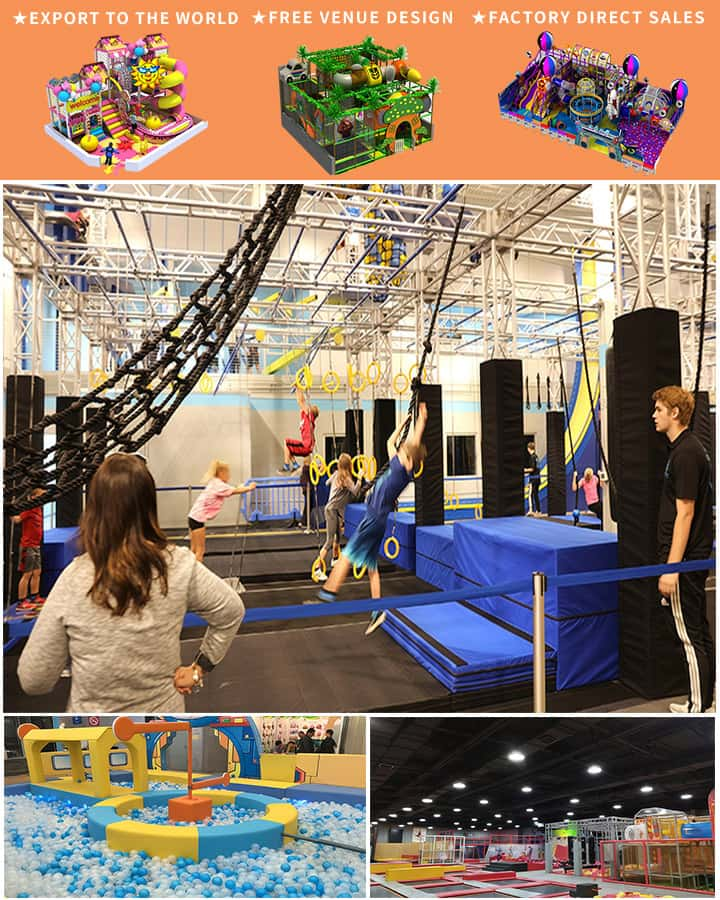Creating a fun and affordable indoor playground is an excellent way to keep kids entertained, regardless of the weather. With some creativity and smart shopping, you can design a space that sparks joy and excitement without breaking the bank. Here’s how you can create your own cheap indoor playground at home.
1. Assess Your Space
Before diving into buying equipment, assess the space you have available. Whether it’s a basement, living room, or even a spare bedroom, knowing your square footage will guide your decisions. Measure the dimensions and think about ceiling height and any fixed obstacles like columns or beams.
2. Budget-Friendly Equipment
One of the best ways to save money is by choosing versatile and multi-functional pieces of equipment. Here are some budget-friendly options:
- Play Structures: Look for modular play systems that can be assembled in different configurations. These are often cheaper than pre-assembled structures and grow with your child.
- Slides: Simple plastic slides are affordable and provide endless hours of fun. They can fit in various spaces thanks to their compact design.
- Climbing Walls: Foam climbing blocks or simple plywood setups can offer a safe yet adventurous experience. DIY versions made from carpet-covered platforms can be both cost-effective and customizable.
- Ball Pits: You don’t need an expensive ball pit; just purchase a kiddie pool and fill it with plastic balls. It’s a simple hack that offers tons of fun.

3. DIY Decor and Accessories
Customizing your indoor playground with DIY decor can add personality and charm without additional costs. Here are a few ideas:
- Themed Murals: Paint a themed mural on one wall using washable paint, such as jungle scenes, under-the-sea themes, or space adventures.
- Interactive Props: Use inexpensive items like cardboard boxes and fabric to create tunnels, forts, or obstacle courses. Adding interactive elements like flappy doors or crawl-through holes boosts imaginative play.
- Safety Padding: Ensure safety with homemade padded mats. Cut foam mats to size and cover them with colorful, durable fabric. Secure them with non-slip tape to prevent accidents.
4. Educational and Sensory Elements
Incorporating educational and sensory elements can turn playtime into a learning experience:
- Chalkboard Walls: Create a chalkboard wall where kids can draw and learn letters, numbers, or shapes. Chalkboard paint is inexpensive and easy to apply.
- Magnetic Boards: Attach magnetic boards to a wall or a piece of furniture for interactive, educational games using magnets.
- Activity Tables: Invest in a small activity table for puzzles, coloring, and other stationary activities that encourage concentration and fine motor skills.
5. Storage Solutions
Effective storage solutions help maintain an organized and clutter-free play area:
- Bins and Baskets: Use labeled bins and baskets for storing toys, balls, and other play items. Clear bins allow kids to see their options, encouraging independent play.
- Wall Shelves: Install sturdy wall shelves for books, art supplies, and smaller toys. Floating shelves are particularly effective for saving floor space.
6. Safety First
While creating a fun environment is essential, safety should always come first:
- Soft Flooring: Use foam interlocking tiles or thick rugs to cushion falls and protect against injuries.
- Supervision: Always supervise young children during playtime to ensure their safety and well-being.
- Non-Toxic Materials: Choose materials that are free from harmful chemicals to safeguard your child’s health.
Conclusion
Building a cheap indoor playground doesn’t mean compromising on fun or quality. With careful planning, smart purchases, and a touch of creativity, you can create an engaging and safe environment for your children to enjoy every day. Start small, involve your kids in the process, and watch their imagination soar in their very own indoor playground.




